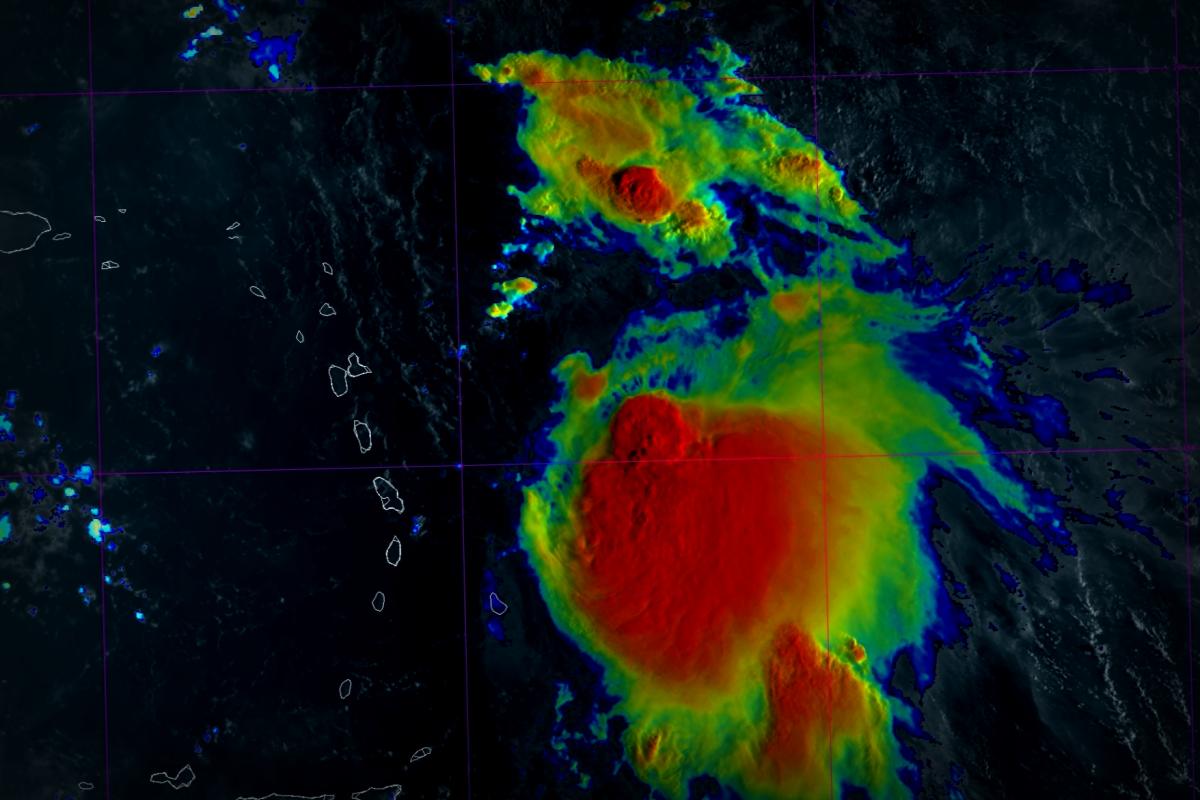Breaking News: Tropical Storm Jerry is on the verge of becoming a hurricane. Stay tuned for the latest updates as of Friday, October 10.
Tropical Storm Jerry is currently swirling in the Atlantic, and experts believe it’s gearing up for more strength, potentially evolving into a hurricane in just a couple of days.
According to an update from the National Hurricane Center on October 9, Jerry is located around 355 miles east-southeast of the northern Leeward Islands, boasting maximum sustained winds near 65 mph, plus higher gusts. They’ve indicated that a “gradual strengthening” seems likely over the following days, with Jerry potentially classifying as a hurricane by late Friday, October 10, or Saturday, October 11.
The hurricane center reports that Jerry is steering west-northwest but is expected to take a turn toward the northwest later today, and then shift slightly northward on Friday and Saturday. It is anticipated that the storm will pass close to or just northeast of the northern Leeward Islands later this evening.
On top of that, forecasters are predicting rainfall between 2 to 4 inches across the Leeward and Virgin Islands through Friday, October 10, which could lead to flash floods in certain areas.
Moreover, the swells produced by Jerry are beginning to affect the Leeward and Windward Islands, and they’re projected to move westward towards the Virgin Islands and Puerto Rico during Thursday night, October 9, subsequently extending to the greater Antilles over the next few days. This could result in dangerously high surf and rip currents.
Tracking Tropical Storm Jerry
This tracking illustration predicts Jerry’s most likely center path, but keep in mind, storm impacts can reach far beyond its center’s path.
Spaghetti Models for Jerry
These modeling illustrations show various forecast tools, but only the top-performing models are relied upon by the hurricane center for accurate forecasting.
Understanding Hurricane Formation
Hurricanes originate in warm tropical waters. When oceanic temperatures rise above 80 degrees, clusters of thunderstorms can come together, forming either a tropical wave or depression.
A tropical depression gets upgraded to a named tropical storm when sustained winds hit 39 mph. Once winds reach 74 mph, the system officially transforms into a hurricane.
How to Get Ready for Hurricanes
Don’t wait until it’s too late to prepare; acting now can save lives. According to NOAA, make sure to stock up on supplies before the shelves are empty and check your insurance coverage early, noting that flood insurance mandates a 30-day waiting period.
- Create an evacuation strategy. If you might be affected by hurricanes, have a plan ready. Determine where to go and how to get there, and be prepared now.
- Gather disaster supplies. Whether you’ll evacuate or ride the storm out, you’ll need essentials not just for the storm but potentially for the recovery period afterward, as stated by NOAA.
- Review your insurance and document belongings. Get in touch with your insurance agent to ensure you have adequate coverage for your home and belongings. Remember that standard home and renters insurance typically doesn’t cover floods, demanding a separate flood insurance policy.
- Establish a family communication strategy. It’s crucial to draft a hurricane plan now and share it with your family, setting meeting spots with an out-of-town fallback option.
- Strengthen your home. Take action now to improve your house’s hurricane defenses by trimming trees and installing storm-proof shutters and impact-resistant glass. Be sure to seal any wall openings.
Gabe Hauari is a national trending news reporter at USA TODAY. Connect with him on X at @GabeHauari or email him at Gdhauari@gannett.com.
This article originally appeared on USA TODAY: Tropical Storm Jerry could soon become a hurricane. See where it’s headed.





















